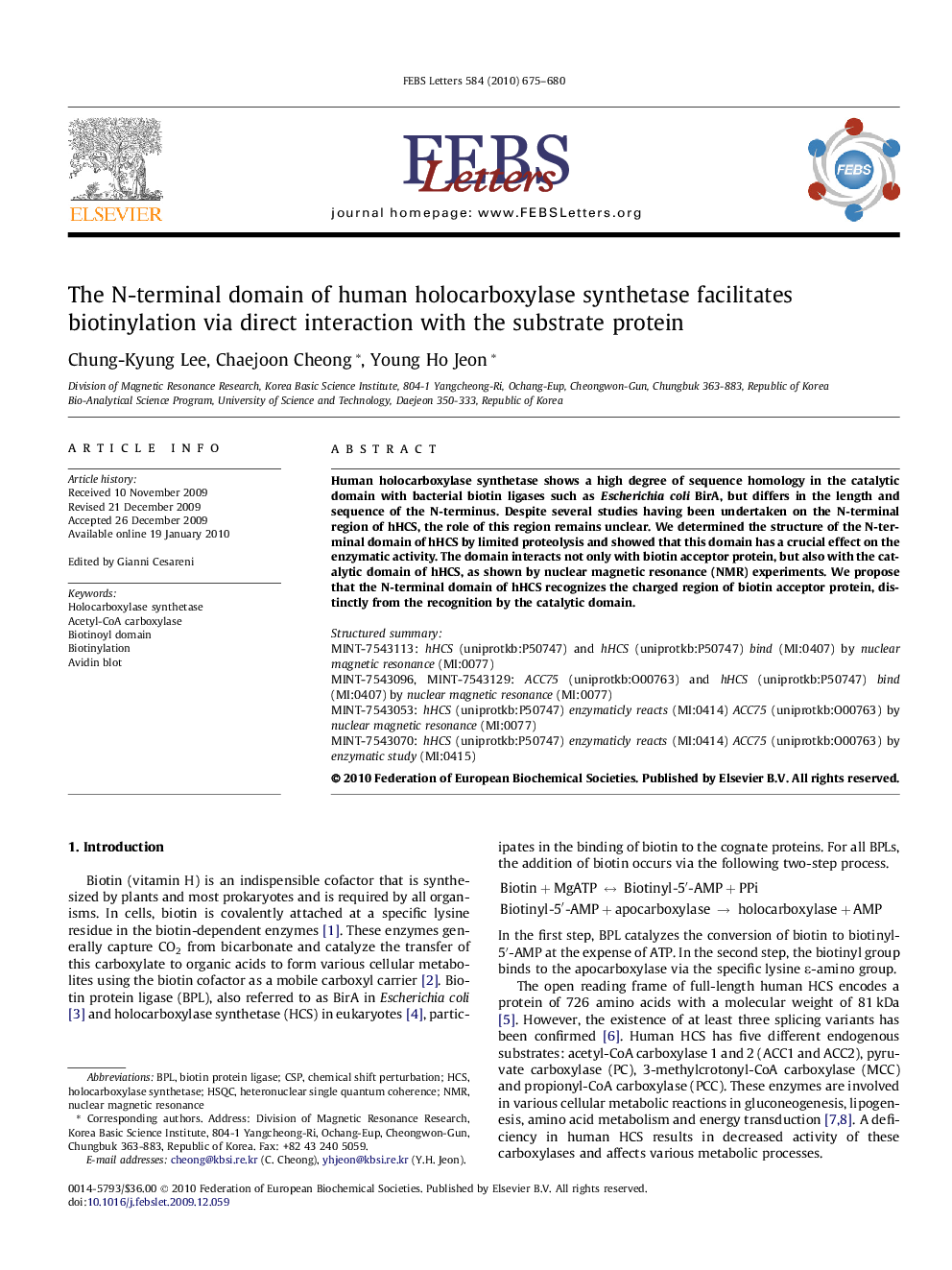| Article ID | Journal | Published Year | Pages | File Type |
|---|---|---|---|---|
| 2048187 | FEBS Letters | 2010 | 6 Pages |
Human holocarboxylase synthetase shows a high degree of sequence homology in the catalytic domain with bacterial biotin ligases such as Escherichia coli BirA, but differs in the length and sequence of the N-terminus. Despite several studies having been undertaken on the N-terminal region of hHCS, the role of this region remains unclear. We determined the structure of the N-terminal domain of hHCS by limited proteolysis and showed that this domain has a crucial effect on the enzymatic activity. The domain interacts not only with biotin acceptor protein, but also with the catalytic domain of hHCS, as shown by nuclear magnetic resonance (NMR) experiments. We propose that the N-terminal domain of hHCS recognizes the charged region of biotin acceptor protein, distinctly from the recognition by the catalytic domain.Structured summaryMINT-7543113: hHCS (uniprotkb:P50747) and hHCS (uniprotkb:P50747) bind (MI:0407) by nuclear magnetic resonance (MI:0077)MINT-7543096, MINT-7543129: ACC75 (uniprotkb:O00763) and hHCS (uniprotkb:P50747) bind (MI:0407) by nuclear magnetic resonance (MI:0077)MINT-7543053: hHCS (uniprotkb:P50747) enzymaticly reacts (MI:0414) ACC75 (uniprotkb:O00763) by nuclear magnetic resonance (MI:0077)MINT-7543070: hHCS (uniprotkb:P50747) enzymaticly reacts (MI:0414) ACC75 (uniprotkb:O00763) by enzymatic study (MI:0415)
